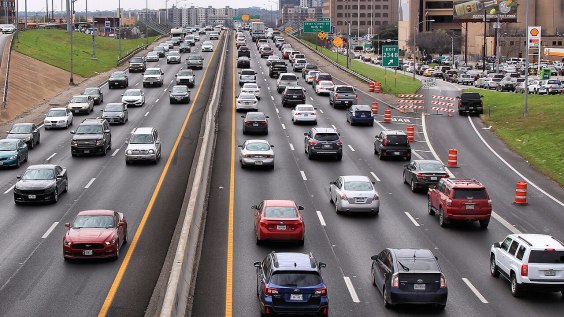When the buzz about a new, stimulus-funded, discretionary transportation grant program started to circulate in 2009, some environmentalists opposed it. They worried it would be a slush fund for the Federal Highway Administration, used to build unnecessary roads that would aggravate sprawl and pollution. But insiders knew that wasn’t how the new Obama administration would be handling things.
TIGER, the Transportation Investment Generating Economic Recovery program, has been praised from the left, right, and center for rewarding innovation, leveraging scarce dollars, breaking down modal silos, and funding non-traditional projects that don’t fit well under formulas.
Though Republicans have sometimes grumbled that the program has merely replaced Congressional earmarks with “administration earmarks,” or that it’s rewarded Democratic districts, they’ve continued to approve funding for the program. Even as House members have zeroed out high-speed rail funding for each of the last three years, they've gone along with five separate appropriations for TIGER without too much fuss.
Yesterday, the Eno Center for Transportation released a paper [PDF] investigating what TIGER has done well, what challenges remain, and what could be improved.
How TIGER changed the way states think about project planning
TIGER blew open the traditional processes for funding transportation. Rather than just submitting a list of projects on the wish list and getting formula funds in return, grantees had to pick their best projects with the greatest benefits; after the first round of grants they also had to have at least a 20 percent match from state, local, or private interests. TIGER has transformed the way transportation officials think, even beyond the grantees – failed applicants have sometimes gone back and tweaked projects, brought in new partners, lowered costs, and improved plans. TIGER has helped transportation officials around the country see a new, more strategic way to plan and carry out projects – a method that is beginning to be expected at the federal level.
Plus, state DOTs aren’t the only entities eligible to apply for TIGER grants – MPOs, port authorities, and transit agencies can apply on their own, too.
The intermodalism of the program has encouraged U.S. DOT to hasten the process of breaking down its own “modal silos” as well, with people from different modal agencies working together to select projects. Intermodalism is also a challenge: It’s not easy to compare a bike trail to a freight rail project or a highway interchange – they are judged on completely different metrics – but DOT has sought to choose the best projects put before them. And, as U.S. DOT Undersecretary Polly Trottenberg said at Eno’s panel discussion yesterday, of all the criticism of the program, there’s been almost no criticism of the individual projects they’ve selected.
Charges of bias
Even last week, when Sen. David Vitter (R-LA) accused the administration of “potential” political bias in the selection of TIGER projects in favor of Democratic-leaning districts, he had very little to back up his claims. His map, showing that Democratic districts got $346 million, compared to Republican districts’ take of $132 million, is probably largely explained by the fact that urban districts, which have more transportation needs, tend to vote Democratic.
The Eno report analyzed per-capita TIGER spending per state and found, perhaps not surprisingly, that states with small populations got a proportionally large amount of money – including some deep-red states like Montana and the Dakotas.
Besides, Trottenberg said, who was the constituency pushing for projects like CREATE, which will relieve freight rail bottlenecks in Chicago? “People in the reddest parts of heartland, who want to get their agricultural products and energy products moving across this country quickly,” she said. “But that’s a ‘Democratic’ project – it’s in Chicago!” It can take two-thirds as long for a train to get through Chicago as it took to get to Chicago from the port of Los Angeles.
Meanwhile, Vitter himself wrote a letter in support of the New Orleans streetcar project – a transit project in a Democratic district. Joshua Schank of Eno said their attempt to analyze Vitter’s claims were fruitless because there was simply no objective way to analyze whether a project was "Democratic" or "Republican." Besides, Blakey said, it’s not like states don’t make political decisions with their money.
The TIGER program pioneered the use of a benefit-cost analysis for projects, which Eno applauds. State DOTs are now also beginning to use it more and more in order to choose projects more strategically, which is a big win all around. But still, different projects can have wildly different kinds of benefits, from vehicle throughput to carbon reduction to social equity, and it’s hard to quantify them and rank them. “I don’t think the state of the art of benefit-cost is that good,” Trottenberg said. “The math is not as precise.”
The administration’s initial focus on “shovel-readiness” for projects has been discarded – or at least, the rhetoric has. In reality, projects still need to be ready for relatively quick turnaround, especially with the current round, which needs to be fully obligated 16 months after the grant decisions are made. Projects don’t necessarily need to be completely finished that fast, but they should be well underway. (Most of the funding cycles have had a slightly longer turnaround time of about 22 months, but the budgeting process was so behind schedule this year that everything got delayed.)
This article will continue tomorrow, with more about how -- to U.S. DOT's surprise -- freight ended up being a big winner with TIGER. And perhaps it was no surprise at all when a small grant program prizing innovation ended up being an excellent source of funding for bicycle and pedestrian projects, too.







